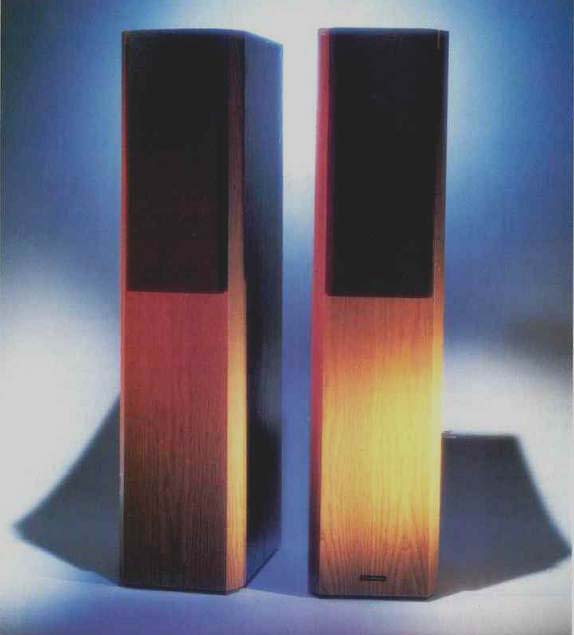
Rated Freq. Response: 34hz to 20 kHz;-6 dB at 30 Hz.
Rated Sensitivity: 90 dB at 1 meter, 2.83 V rms applied.
Rated Impedance: 6 ohms nominal, 4 ohms minimum.
Recommended Amplifier Power: 20 to 300 watts.
Dimensions: 38 in. H x 8 1/8 in. W x 15 in. D (96.5 cm x 22.5 cm x 38.1 cm).
Weight: 38 lbs. (17.2 kg) each.
Prce: $699 per pair; available in oak or black.
Company Address: 458 Second Ave., Tiffin, Ohio 44883

Back view of BIC V-604 shows the rear-mounted woofer and tweeter, two ports (one plugged), and the terminal cup.
If you were old enough in the mid- to late '70s to be interested in hi-fi, you probably remember BIC's heavy pro motion of its Venturi speakers. These systems were based on a discovery by Italian physicist Giovanni Battista Venturi (1746-1822), who first observed that when air (or any other fluid) is forced through a constriction, its velocity increases and its pressure decreases. The Venturis' en closures appeared to be conventional vented boxes, but their ports were strongly flared both inside and out and frequently turned a 90° bend inside the box. The manufacturer proudly pointed out the output from the Venturi port had higher pressure and lower distortion than the output of the cone driver itself. These properties are common to most vented boxes, not just BIC's; what BIC accomplished was the design and manufacture of a well-engineered vented-box speaker with a low-turbulence vent, which was not very common in those days.
The name BIC originally stood for British Industries Corporation, an American company that imported components from England and Japan to the United States. In the 1960s BIC handled such well known brands as Wharfedale, Garrard, and Luxman. In the 1970s it began producing components and speakers under its own name, including the first belt-driven record changer, a two-speed cassette deck, and speakers using the patented Venturi design.
Unfortunately, the company folded in 1982. New owners revived it as BIC America in 1988, and it is doing very well as a loudspeaker manufacturer. BIC has 14 free standing speakers in its home lineup as well as in-wall speakers and multi-speaker pack ages for home theater. The free-standing speakers range in price from $159 per pair for the Adatto A-1 up to $1,200 per pair for the Reálta, a floor-standing speaker suitable for stereo and home theater.
The V-604 is the larger of two bipolar floor-standing tower speakers that have Venturi vents. Both are two-way designs with front and rear drivers that operate in phase with each other. The V-604 has 6 inch woofers and 3/4-inch dome tweeters, one each on the front and on the rear, with the tweeters located above the woofers.
The V-604 has two ports, each 3 inches in diameter and 81 inches long, mounted one above the other at the bottom of the rear panel. The Venturi effect is supplied by two 2 1/4-inch-long molded-plastic inserts that fit into the port tubes. These inserts smoothly constrict the airflow in the port by providing a bulge that reduces each port's cross section by about one-third; they also serve as decorative bezels that improve the ports' appearance.
The enclosure's tuning can be changed by removing a foam plastic plug, half an inch thick, from the top port, which raises the tuning frequency by about one-half octave. Changing the tuning of a vented en closure also changes its bass frequency response, power handling, and distortion.
The V-604 comes with the plug in place, which makes its bass response flatter and more extended and improves the speaker's ability to reproduce pipe organ and other instruments that deliver high levels of low bass. With the plug removed, the V-604 has a slightly peaked bass response that may be preferred for music dominated by higher-frequency bass, such as pop and rock.
The V-604's enclosure is constructed of vinyl-wrapped, 3/4-inch medium-density fiberboard. It is cross-braced internally with two 5/8-inch shelves (made of the same material), which divide the cabinet into three equal sections. Holes in the shelves al low the free flow of acoustic energy within the cabinet. The front of the enclosure is beveled to minimize edge diffraction. Front and rear grilles, made of foam and molded plastic, attach by pegs. Rather than lying flat against the panel, each grille rests about 1/4 inch out from it. The speaker is available in either black or oak vinyl, with all four sides finished.
The V-604's tweeters are ferrofluid cooled and have domes made from polyamide and Mylar. The domes are only 3/4 inch in diameter, which improves the BIC's high-frequency coverage. The 6-inch woofers have stamped metal frames, rein forced plastic cones, butyl-rubber surrounds, and ceramic magnets that are relatively large (3 1/2 inches in diameter and 5/8 inch thick).
The terminal cup, at the center of the rear panel, holds a single pair of five-way binding posts on standard (3/4-inch) centers; bi wiring is not supported. The posts can accept cable up to 0.16 inch in diameter (AWG No. 8 or smaller).
The V-604's crossover is wired on a 3 3/8 x 2 1/2-inch p.c. board attached to the terminal cup. The section driving the woofer is a second-order low-pass filter composed of a series inductor and capacitor to ground. The tweeter is connected to a second-order high pass filter consisting of a series capacitor with an inductor to ground, followed by a resistor and a small inductor (0.075 mH) in series with the tweeter. That small inductance is apparently intended to reduce the tweeter's high-frequency response slightly, and the series resistor reduces its overall output level to match the woofer's sensitivity.
Measurements
The BIC V-604's frequency response, measured in a large anechoic chamber, is shown in Fig. 1. The measurements were taken at the height recommended by BIC, halfway between the woofer and tweeter.
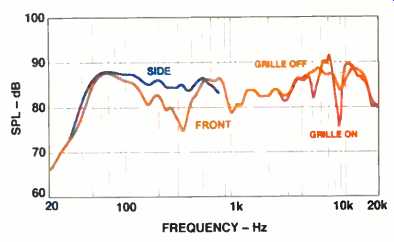
Fig. 1--On-axis response.
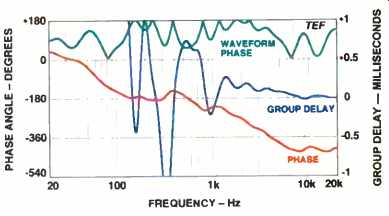
Fig. 2--On-axis phase response, group delay, and waveform phase.
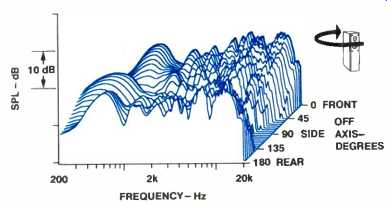
Fig. 3-Horizontal off-axis frequency responses.
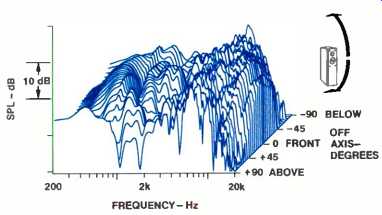
Fig. 4-Vertical off-axis frequency responses.
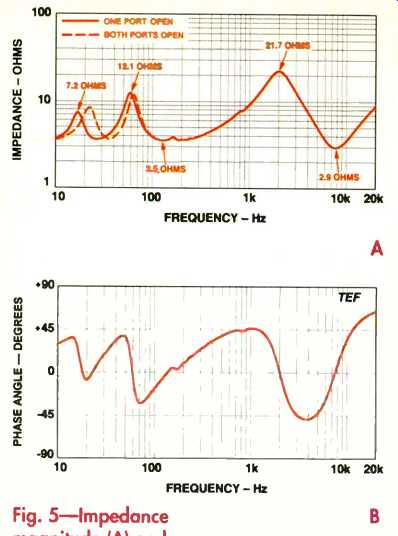
Fig. 5-Impedance magnitude (A) and phase (B).
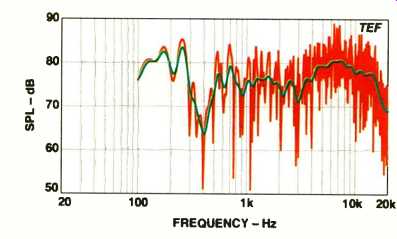
Fig. 6-Three-meter room response.
The curve taken from the front of the V-604, even with the grille off, is not terribly smooth. Note the significant dips at 320 and 900 Hz and the rise between 4 and 16 kHz. The 320-Hz dip and the ac companying depression between 150 and 500 Hz are caused by interference between the outputs of the front and rear woofers, an effect common to bipolar speaker systems.
Low frequencies from the rear drivers wrap around the cabinet to mingle with those from the front; these waves will be out of phase-and will cancel-in the range around the frequency whose wavelength is twice the path length from the front to the rear. Below that frequency the path length is a small fraction of the wavelength, and the rear output reinforces the front output. The front and rear radiation will also be out of phase at some higher frequencies, but cancellation is less of a problem above the bass range: The drivers become more directional as frequency rises, and less and less of the rear output wraps around to the front.
In the response curve taken at the side of the V-604's cabinet, equidistant from the front and rear drivers and from the rear ports, the cancellation evident in the front response is completely gone. In this frequency range, the V-604 is radiating as an in-phase dipole but with its main radiation going to the sides rather than the front and rear! The responses in Fig. 1 were taken with both of the V-604's ports open. Closing one port made little difference in response as measured from the front but made a more significant change in the side response. In each case, closing one port flattened the curve, reduced output slightly around 75 Hz, and increased output below 32 Hz.
Measured from the side (which is a more accurate reflection of what you would hear in a normal listening environment instead of my anechoic chamber), the port-closed response was flatter from 50 to about 150 Hz and about 2 dB lower at 80 Hz. The increase in deep bass output with one port A closed ranged from 0.5 dB at 32 Hz to 3 dB at 20 Hz.
The V-604's grille causes significant response aberrations above 4 kHz: several large peaks and dips, including a particularly big dip of about 9 dB at 8.6 kHz. Averaged from 250 Hz to 4 kHz (giving equal emphasis to each third-octave frequency band), sensitivity measured 82.5 dB, significantly below BIC's 90-dB rating. The depressed response between 150 and 500 Hz and between 800 Hz and 3.5 kHz contributed to the low sensitivity reading. Even with these regions filled in, the sensitivity would rise only to 86 or 87 dB.
I had four samples of the V-604 to work with. Three of these samples matched quite closely, their responses fitting a 1-dB envelope from 200 Hz to 20 kHz. However, the fourth sample was not so well matched, at least above 9 kHz; its response was 2 dB higher than the others' at 10 kHz, 5 dB at 12.5 kHz, and 9 dB at 20 kHz.
Figure 2 shows the V-604's phase and group-delay responses, referenced to the tweeter's arrival time. The phase curve's de crease with rising frequency is not linear, as a well-behaved speaker's phase curve would be, but undulates in the range from 150 Hz to 1.5 kHz. The phase undulations correspond to the irregularities in the on-axis frequency response and would be reduced if the axial response were smoother. Between 1 and 10 kHz, the phase decreases by about 200°. When averaged from 1 to 4 kHz, the group-delay curve indicates a relatively low offset of about 0.14 millisecond, with the woofer delayed behind the tweeter. The waveform phase (actually, the absolute value of the wrapped waveform phase) undulates strongly between 0° and 180°, indicating that waveshapes won't be preserved in any frequency range. For waveshapes to be pre served (either upright or inverted), the wave form phase must stay near 0° or 180° over significant frequency ranges, but no conventionally designed speaker achieves that.
The horizontal on- and off-axis responses of the V-604 are shown in Fig. 3. (The bold 0° curve at the rear of the graph is on-axis response; the 180° curve in the front is the response taken on the rear drivers' axis.) Even though the response is a bit rough, the curve-to-curve uniformity demonstrates even horizontal coverage. High-frequency coverage is very good, with only minimal narrowing above 10 kHz. As you'd expect from a bi-pole, the rear and front responses are essentially the same, and output be tween 150 and 500 Hz is greater at the sides than at the front or rear (not clearly seen). At higher frequencies, however, output to the side is considerably lower because of the speaker's directivity.
The V-604's vertical on- and off-axis response is shown in Fig. 4. (The bold curve in the middle of the graph is on axis.) In the ±15° main vertical listening window, the curves are quite uniform except in the range from 1.5 to 7 kHz, which includes the 3-kHz crossover. In this range, there are broad dips at angles below the axis and a sharp, narrow dip 15° above the axis, al though response through this range is quite uniform on axis and up to 10° above it. However, most details of the above-axis responses are obscured by features in the front of the graph.
Figure 5A shows the impedance magnitude of the V-604 from 10 Hz to 20 kHz, with both ports open and with one port open. The vented-box characteristic of two peaks straddling a dip is evident below 100 Hz. This dip indicates the approximate location of the vented-box tuning frequency (26 Hz with one port open and 36 Hz with both ports open). The maximum impedance is 21.7 ohms, which occurs at 2 kHz, just below crossover. The minimum is a low 2.9 ohms, at 8 kHz. A slight impedance anomaly is visible between 160 and 200 Hz.
The V-604's overall impedance variation is a moderately high 7.5 to 1 (21.7 divided by 2.9). Cable series resistance would there fore have to be limited to a maximum of about 0.039 ohm to keep cable-drop effects from causing response peaks and dips greater than 0.1 dB. For a typical run of about 10 feet, that would imply 10-gauge (or larger), low-inductance cable.
The cabinet is fairly solid: A high-level sine-wave sweep caused minimal vibration except in two frequency bands. There was significant vibration of the front, sides, and back in the band from 160 to 220 Hz, which coincides with the anomalies seen in the impedance magnitude curve (Fig. 5A).
Some lesser vibrations of the sides and front occurred around 325 Hz.
The V-604's woofers overloaded quite gracefully when overdriven. Maximum excursion of the woofers was about 0.5 inch, peak to peak, and I noted no dynamic offset.
Woofer excursion was, as it should be, considerably reduced at the vented-box resonant frequency, which was about 26 Hz with one port open and about 36 Hz with both ports open. There was little chuffing from the ports. I was impressed with the V-604's clean bass output in both of the port configurations.
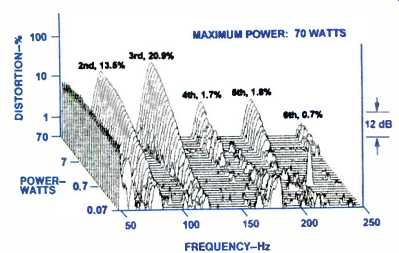
Fig. 7--Harmonic distortion for E, (41.2 Hz).
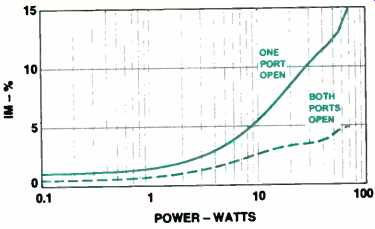
Fig. 8-IM distortion for A4
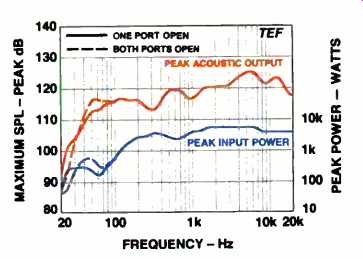
Fig. 9-Peak input power and sound output.
The V-604's 3-meter room response, both raw and smoothed, is shown in Fig. 6. The speaker was in the right-hand stereo position; the test microphone was at ear height (36 inches), at the listener's position on the sofa. Between 480 Hz and 18 kHz, the averaged curve fits a fairly tight, 9-dB, window. Above 15 kHz, the averaged curve rolls off, until it's about 7 dB lower at 20 kHz than at 1 kHz. The maximum deviation is a dip of about 12 dB at 400 Hz; this coincides approximately with the bipolar cancellation region mentioned earlier and also with the region where floor-bounce cancellation causes dips in many speakers' response.
Figure 7 shows the V-604's E, (41.2-Hz) harmonic distortion with one port plugged. The second harmonic rises to a moderate 13.5%, while the third rises to nearly 21%; higher harmonics are below 2%. With both ports open, the EX distortion (not shown) was significantly lower, at only 10.8% second harmonic, 5.4% third, 1.1% fourth, and 0.9% fifth. This reduction occurs because opening the port raises the vented-box tuning point (where distortion is al ways low) to 36 Hz, which is closer to the 41.2-Hz test frequency. At 1 meter in free space and with a 70-watt input, the BIC V-604 generated a quite usable 102 dB SPL at 41.2 Hz.
Figure 8 shows the IM distortion versus power, created by 440-Hz (A4) and 41.2-Hz (E1) tones of equal power. With one port open, the distortion rises smoothly with power, reaching a significant 15% at 70 watts. With both ports open, the distortion is significantly lower, reaching only 5% at full power. On this test, the V-604 sounded significantly cleaner with both ports open.
The V-604's short-term peak power in put and output are shown in Fig. 9. With one port closed, peak input power starts high, at 60 watts, then rises quickly to a plateau of 270 watts at 26 Hz. After a fall back to 150 watts at 62 Hz, the input power rises smoothly (to 3.3 kilowatts at about 350 Hz), falls slightly (to 2.2 kilowatts at 600 Hz), and then rises to its maximum, 5.5 kW, between 1.6 and 6 kHz. At higher frequencies, the maximum input power drops somewhat, to about 3.5 kW. Opening both ports affects peak input power only in the bass, below 80 Hz; below 32 Hz, power handling is reduced, but it rises above that point, increasing at 50 Hz by a significant 3.3 dB, from 220 to 470 watts.
The peak acoustic output shown in Fig. 9 includes room gain. With one port open, the peak output starts strong, at 91 dB at 20 Hz, and then rises rapidly: It passes 100 dB at 24 Hz and 110 dB at 44 Hz, reaching a peak of 116 dB at 125 Hz. After a hesitation at 300 Hz, the peak output rises into the high range of 118 to 125 dB SPL. With both ports open, the maximum output drops dramatically below 33 Hz and increases correspondingly above that frequency, reaching a gain of nearly 5 dB at 55 Hz. The bass output of the V-604 is solidly in the middle range of all the speakers I have tested for Audio.
The ability to change the V-604's tuning by blocking and unblocking one port is a valuable feature. With one port closed, the V-604 is better able to reproduce program material with high-level bass below 32 Hz.
With both ports open, the system is optimized to play material with higher-frequency bass energy, such as movie sound effects and pop/rock.
Use and Listening Tests
Compared to some large and heavy floor-standing systems I have reviewed recently, the BIC V-604s were a welcome relief. At only 38 pounds each, they are quite easy to lift, move around, and set up. My re view speakers were finished in oak vinyl and looked quite good. The beveled front edges of the cabinet and the floating black grille add a distinctive look.
Small push-in spikes are supplied; I listened with the spikes in place and without them. When I put the V-604s on my listening room's thick carpet without using the spikes, the speakers were somewhat unstable laterally and would not quite stand up right. With the spikes piercing the carpet to make solid contact with the floor, these problems disappeared.
The Venturi tower owner's manual, though short, is filled with useful information on the spikes, hookup and cabling, power handling, listening room acoustics and construction, and listener and speaker positioning. I listened with the V-604s placed 2 1/4 feet from the side walls and 4 feet from the wall behind them, within BIC's recommendations. My room's front wall is mostly hard-surfaced and reflective, quite well suited for listening to bipolar systems. I listened from a sofa about 8 feet away, mostly with the grilles removed from the speakers. For comparisons, I used a pair of B&W 801 Matrix Series 3 speakers; for A/B comparisons, I had to attenuate the V-604s by 1 or 2 dB to match their level to the 801s'. My other equipment included a Krell KRC preamp and KSA-250 power amp and Straight Wire Maestro cabling.
My initial listening to the V-604s revealed a bright and dynamic sound, an open and spacious soundstage, and extended, powerful bass. The first CD I listened to was a very clean Dorian Discovery disc of medieval chamber music with vocals, Saint Francis and the Minstrels of God (DIS-80143). The V-604s reproduced this disc very well, offering a clean, open, and spacious presentation but with a significantly brighter high end than the B&Ws. This brightness emphasized vocal sibilants and higher instrument harmonics but made the B&Ws' slightly rolled-off treble sound somewhat dull by comparison. The BICs' elevated high-frequency response was a plus on most tracks of this CD. The Romanesque harp solo on track 3 was rendered quite strikingly and with much presence, and each individual string pluck sounded quite distinct.
On more lively classical orchestral material, such as Telemann for Trumpet (Dorian Discovery DIS-80132), the V-604s re-created the trumpet sound with clarity, cleanliness, good air, and presence. The rear-firing drivers helped significantly here by adding an enveloping spaciousness to orchestral passages and hall reverberance that was not present with the B&Ws. Instrument placement and soundstaging were quite accurate but had an added depth that I found quite pleasing. Overall, the BIC speakers made the music sound more distant, while the B&Ws were more up-front and dry-sounding. I also noticed tonal differences be tween the V-604s and the 801s that changed the effective stage depth of certain instruments.
On pink noise, the V-604s' response definitely tilted more toward the high mids and treble than the B&Ws', sounded less smooth through the midrange, and exhibited moderate tonality. (Any tonality in pink noise indicates that some frequency bands are being favored over others; a truly flat, smooth speaker would exhibit no tonality.) When I stood up during the pink-noise tests, I heard low to moderate midrange tonal changes from the V-604s, mainly a roughening of the response, but it was restricted to the upper midrange.
With the supplied foam plug blocking one port, the V-604 delivered usable response in the lowest, 20-Hz, third-octave pink-noise band; few of the speakers I have tested can manage this. In the higher bass bands, the V-604's output was quite robust, competing well with the B&W's. At the lowest frequencies, the V-604s produced significantly less port air-turbulence noise than the B&Ws when both systems were playing at the same level. The V-604's woofers over loaded gracefully when overdriven. With the port plug removed, the BIC had no us able output at 20 Hz, some usable output at 25 Hz, and plenty of clean output at all higher bass frequencies. In the 40-, 50-, and 63-Hz bands, it could play noticeably louder than it could with the port plugged.
The V-604s did not wimp out with hard-driving pop/rock recordings. They played loud and clean, with a level of bass befitting a larger system. It was only on heavy metal rock, played at near-concert levels, that the V-604s compressed, rendering the kick drum without the wallop and gut-thump of the B&Ws. Removing the port plugs helped the V-604s compete better with the B&Ws on this music.
On classical recordings with high levels of low bass, such as pipe organ pedal notes, the V-604s performed very well, occasionally rattling knickknacks on the wall. On this music, the speakers performed better with the port plugs in.
One very positive trait of the V-604s is not evident unless you get up and walk around while listening. As you approach and walk between the BICs, their overall sound and high-frequency output changes very little. This is a characteristic of all bipolar systems that have a set of wide-range drivers on the rear of the cabinet as well as on the front.
In summary, the BIC V-604s performed very well in most of my measurements and listening tests. At only $699 per pair, they are solid entry-level speakers for a listener who wants to go bipolar. The V-604s' extended bass response and good looks add to their appeal and value.
-D. B. KEELE, JR.
(Audio magazine, Mar. 1997)
Also see:
BIC/LUX 71/3R AM/FM Stereo Receiver (Feb. 1972)
B-I-C Speaker Systems (advertisement, Nov. 1978)
B-I-C VENTURI speakers (Sept. 1974)
VMPS FF-3 Speaker (March 1997)
= = = =